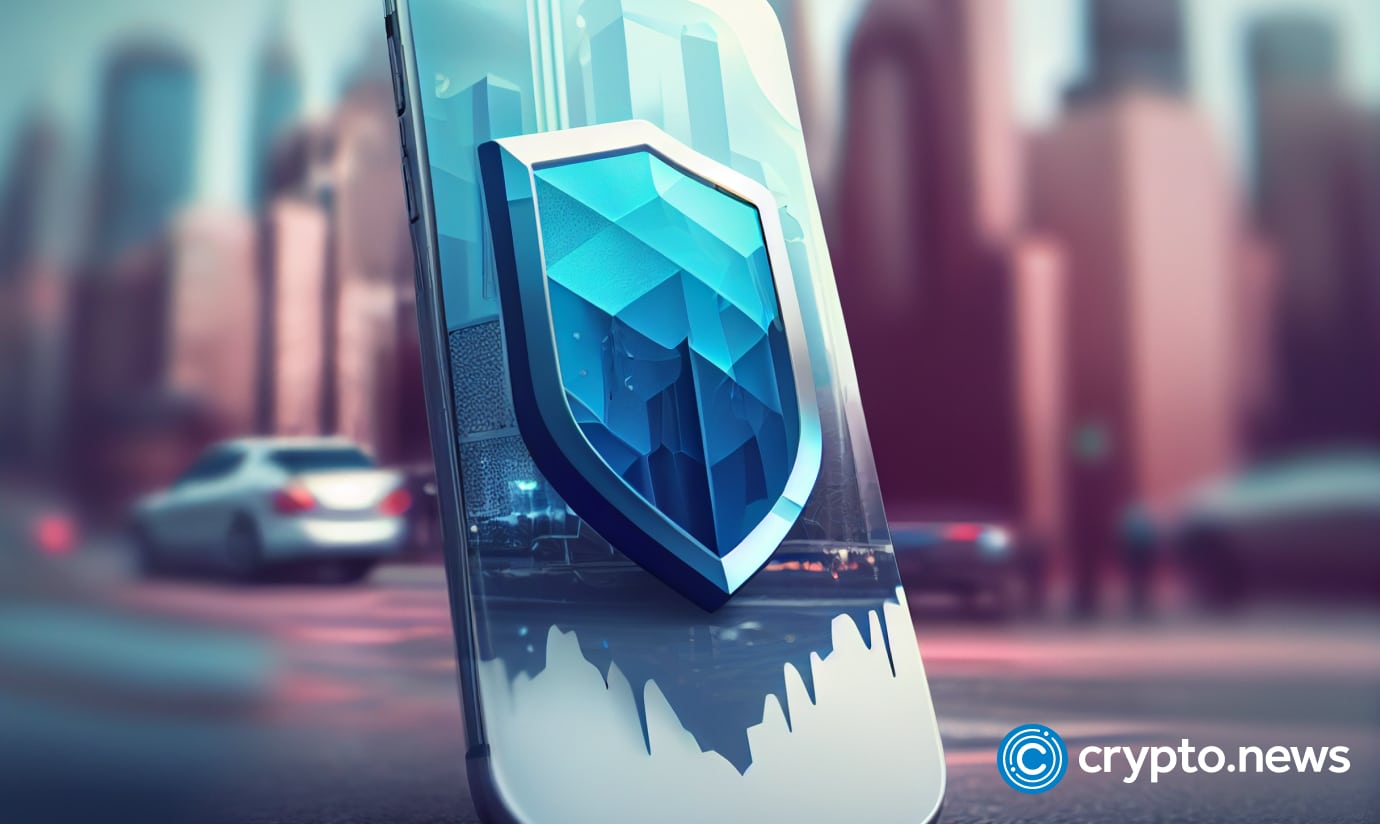
2024-7-12 04:03 |
In the world of Web3, keeping your digital assets secure is paramount. Enter the Web3 wallet — a transformative tool that offers a seamless and secure way to manage your digital investments. But what exactly is a Web3 wallet and how do you choose the best one for your needs? This guide aims to demystify Web3 wallets and provides you with the essential information you need to make an informed choice.
Introduction to Web3 WalletsIn recent years, the concept of decentralization has gained significant traction. From finance to art, industries are exploring ways to leverage blockchain technology for greater efficiency and transparency. At the heart of this decentralized revolution are Web3 wallets. These digital wallets, also known as crypto wallets, are digital or physical devices that store private keys for accessing and managing cryptocurrency and blockchain-based assets, including NFTs. They are not just storage solutions; they are gateways to the decentralized web, offering users the ability to interact with decentralized applications (dApps) and participate in decentralized finance (DeFi).
Definition and Purpose of a Web3 WalletA Web3 wallet is a digital wallet that allows users to store, manage, and interact with digital assets on blockchain networks. Crypto wallets, including various types of Web3 wallets, emphasize control, security, and anonymity, offering features that cater to different user needs. Unlike traditional wallets, Web3 wallets provide a secure and user-friendly interface for accessing dApps and participating in the DeFi economy. They are designed to offer more control and autonomy to users, eliminating the need for intermediaries.
Importance of Web3 Wallets in the Digital Asset EcosystemWeb3 wallets play a crucial role in the digital asset ecosystem. They not only enable users to securely store and manage their digital assets but also serve as a gateway to the DeFi economy. By providing access to various financial services and applications, Web3 wallets empower users to take control of their financial future. With a Web3 wallet, you can lend, borrow, stake, and trade digital assets seamlessly.
Understanding Private KeysAt the core of any Web3 wallet is the concept of private keys. Understanding how these keys work is essential for anyone looking to use a Web3 wallet.
What Are Private Keys and How They Secure Digital AssetsPrivate keys are unique codes that are used to access and manage digital assets on blockchain networks. These keys are essential for signing transactions and proving ownership and control of digital assets. Unlike passwords, private keys are cryptographic codes that offer a higher level of security. They are the backbone of blockchain security, ensuring that only the rightful owner can access and transfer their assets.
Best Practices for Managing Private KeysManaging private keys securely is crucial to safeguarding your digital assets. Here are some best practices:
Store private keys securely by using a non-custodial wallet or a hardware wallet, which offer enhanced security compared to software wallets. Never share your private keys with anyone and avoid storing them in plain sight, such as on your computer or in a cloud storage service, to prevent unauthorized access. Use strong passwords and enable two-factor authentication (2FA) to protect access to your keys, ensuring that your accounts have an added layer of security against potential breaches. Types of Web3 WalletsWeb3 wallets come in various forms, each offering different levels of security and convenience. Understanding the types of wallets available can help you choose the one that best suits your needs.
Custodial wallets are managed by a third party, such as an exchange, and are recommended for new users. These wallets offer easy user onboarding, security assistance, and help manage blockchain complexity.
Desktop wallets are applications installed on a computer or laptop, allowing users to store, manage, and trade cryptocurrency directly from their desktop or laptop. They are considered more secure than web wallets but less secure than hardware wallets as they are connected to the internet and can be vulnerable to hacking, malware, or phishing attacks.
Mobile wallets are designed specifically for use on mobile devices, such as smartphones or tablets. These wallets provide convenient access to store, manage, and trade cryptocurrency directly from mobile devices but are less secure than hardware wallets due to their internet connectivity and vulnerability to hacking, malware, or phishing attacks.
Non custodial wallets provide users with full control over their assets, emphasizing security and control aspects. Users hold the private keys and are solely responsible for the security of their funds. These wallets often support multiple chains, in-app staking, NFT support, and more.
Hot Wallets (Software Wallets) and Their CharacteristicsHot wallets are a type of web3 wallet that is always connected to the internet, allowing for easy access and management of funds but also making them more susceptible to security threats. They are convenient and user-friendly, making them a popular choice for everyday transactions. However, their online nature makes them more vulnerable to security risks such as hacking and phishing attacks. Examples of hot wallets include MetaMask, Trust Wallet, and Coinbase Wallet.
Cold Wallets (Hardware Wallets) and Their BenefitsCold wallets, on the other hand, are physical devices that store private keys offline. This offline storage provides an additional layer of security, protecting against hacking and unauthorized access. While they may be less convenient for frequent transactions, they are ideal for long-term storage of digital assets. Examples of cold wallets include Ledger, Trezor, and Ledger Nano.
How Web3 Wallets WorkTo fully appreciate the benefits of Web3 wallets, it’s essential to understand their architecture and functionality.
A smart contract wallet is managed by smart contracts on a blockchain network. These wallets are controlled by the logic outlined in the smart contract, which could require multiple signatures and offer features like recoverability, support for arbitrary logic, and the ability to batch transactions together. They are ideal for entities requiring multiple parties to approve transactions.
Overview of the Wallet Architecture and FunctionalityWeb3 wallets use a combination of public and private keys to interact with blockchain networks. They provide a user-friendly interface for managing digital assets, sending and receiving transactions, and interacting with dApps. The wallet generates a unique address for each user, which can be shared publicly to receive assets, while the private key remains confidential and is used to authorize transactions.
How Wallets Interact with Blockchain NetworksWeb3 wallets use APIs and node connections to interact with blockchain networks. When you initiate a transaction, the wallet signs it using your private key and broadcasts it to the network. The nodes in the network validate the transaction and add it to the blockchain. This process ensures the integrity and security of transactions while enabling users to access various blockchain-based services, including DeFi protocols and NFT marketplaces.
Security ConsiderationsWhile Web3 wallets offer numerous benefits, they also come with certain risks. Mobile apps for Web3 wallets provide convenient access to funds but must be kept updated and secure to prevent vulnerabilities. Understanding these risks and taking appropriate security measures is essential for safeguarding your digital assets.
Common Risks and Threats to Web3 WalletsPhishing attacks, hacking, and unauthorized access are common risks to Web3 wallets. Phishing attacks often involve tricking users into revealing their private keys or login credentials through fake websites or emails. Hacking can occur if your wallet software or device is compromised, leading to unauthorized access to your assets.
Keeping Your Wallet Secure: Best Practices and TipsTo keep your wallet secure, follow these best practices:
Use strong passwords and enable two-factor authentication (2FA) to protect access to your wallet. Regularly update your wallet software and firmware to ensure you have the latest security patches. Be cautious when interacting with unknown or unverified dApps and services. Choosing the Best Web3 WalletWith numerous Web3 wallets available, choosing the right one can be challenging. Smart contract wallets offer added security through features such as multiple parties to approve transactions and recoverability of funds. Here are some factors to consider when selecting a Web3 wallet.
Factors to Consider When Selecting a Web3 WalletSecurity: Look for wallets with robust security features, such as multi-signature (multi-sig) wallets that require multiple approvals for transactions, and hardware wallets that store your private keys offline, away from potential online threats.
User Experience: Choose a wallet with a user-friendly interface, intuitive navigation, and easy-to-use features, ensuring that even beginners can manage their digital assets without hassle.
Compatibility: Consider wallets that support multiple blockchain networks and digital assets, allowing you to manage a diverse portfolio of cryptocurrencies within a single platform. This versatility is crucial for those who invest in a variety of digital currencies.
Evaluating Wallet Features and FunctionalityWhen evaluating wallet features and functionality, look for the following:
Staking, lending, and borrowing capabilities to maximize your digital assets, allowing you to earn rewards and interest while maintaining flexibility in asset management. Support for decentralized exchanges (DEXs) and other DeFi protocols to enhance your financial activities, providing seamless integration and access to a wide array of decentralized financial services. The Role of Hardware WalletsHardware wallets play a critical role in enhancing the security of digital asset storage. Understanding how they work and their benefits can help you decide if they are right for you.
What Is a Hardware Wallet, and How Does It Work?A hardware wallet is a physical device that stores private keys offline. When you need to sign a transaction, the hardware wallet connects to your computer or mobile device and uses its secure environment to sign the transaction without exposing the private key to the internet. This process provides an additional layer of security, making it difficult for hackers to access your assets.
Benefits of Using a Hardware Wallet for Digital Asset StorageHardware wallets offer several benefits for digital asset storage:
Enhanced security: By storing private keys offline, hardware wallets protect against hacking and unauthorized access. They utilize robust encryption methods to ensure that sensitive information remains inaccessible to cybercriminals and malicious software. Reduced risk of loss or theft: Hardware wallets provide a secure way to store digital assets for the long term, reducing the risk of loss or theft. These wallets are often built with tamper-resistant materials and can be backed up with recovery phrases, ensuring peace of mind even if the physical device is misplaced or damaged. Popular Web3 Wallet OptionsSeveral Web3 wallets are popular among cryptocurrency enthusiasts and tech-savvy individuals. Here are some examples and their features.
Examples of Popular Web3 Wallets, Including MetaMaskMetaMask: A popular browser extension and mobile app wallet that supports Ethereum and other blockchain networks. It offers features such as staking and lending capabilities.
Trust Wallet: A mobile app wallet that supports multiple blockchain networks and digital assets. It provides features such as decentralized exchanges (DEXs) and other DeFi protocols.
Coinbase Wallet: A software wallet that supports multiple blockchain networks and digital assets. It offers features such as staking and lending capabilities.
Brief Overview of Their Features and BenefitsMetaMask: Supports Ethereum and other blockchain networks, offering a user-friendly interface and advanced features for interacting with decentralized applications (dApps) and decentralized finance (DeFi) protocols. It also includes built-in security measures and the ability to customize gas fees, making it a popular choice for both beginners and experienced users.Conclusion
Trust Wallet: Provides a seamless experience for users, with support for multiple blockchain networks and digital assets. It also offers integrated decentralized exchanges (DEXs) for easy trading. Trust Wallet emphasizes privacy and security, allowing users to maintain full control of their private keys. The wallet is compatible with a wide range of tokens and supports staking for various cryptocurrencies.
Coinbase Wallet: Offers a secure and user-friendly platform for managing digital assets, with features such as staking, lending, and access to various DeFi protocols. Coinbase Wallet integrates with the larger Coinbase ecosystem, enabling users to easily transfer funds between their wallet and Coinbase account. Additionally, it supports a wide array of tokens and collectibles, providing comprehensive support for the growing world of digital assets.
Final ThoughtsWeb3 wallets are essential tools for anyone involved in the cryptocurrency and blockchain space. They enable users to securely store and manage their digital assets while providing access to a wide range of financial services and applications. When choosing a Web3 wallet, consider factors such as security, user experience, and compatibility to find the best option for your needs. Always follow best practices for managing private keys and keeping your wallet secure to protect your digital investments.
By understanding the different types of Web3 wallets, their features, and how they work, you can make informed decisions and confidently participate in the decentralized web. For those looking to take their digital asset management to the next level, consider exploring hardware wallets and other advanced security measures to safeguard your investments.
Editor’s note: This article was written with the assistance of AI. Edited and fact-checked by Owen Skelton.
The post What is a Web3 Wallet? The Ultimate Guide for Cryptocurrency Enthusiasts appeared first on NFT News Today.
origin »Atomic Wallet Coin (AWC) на Currencies.ru
|
|
















